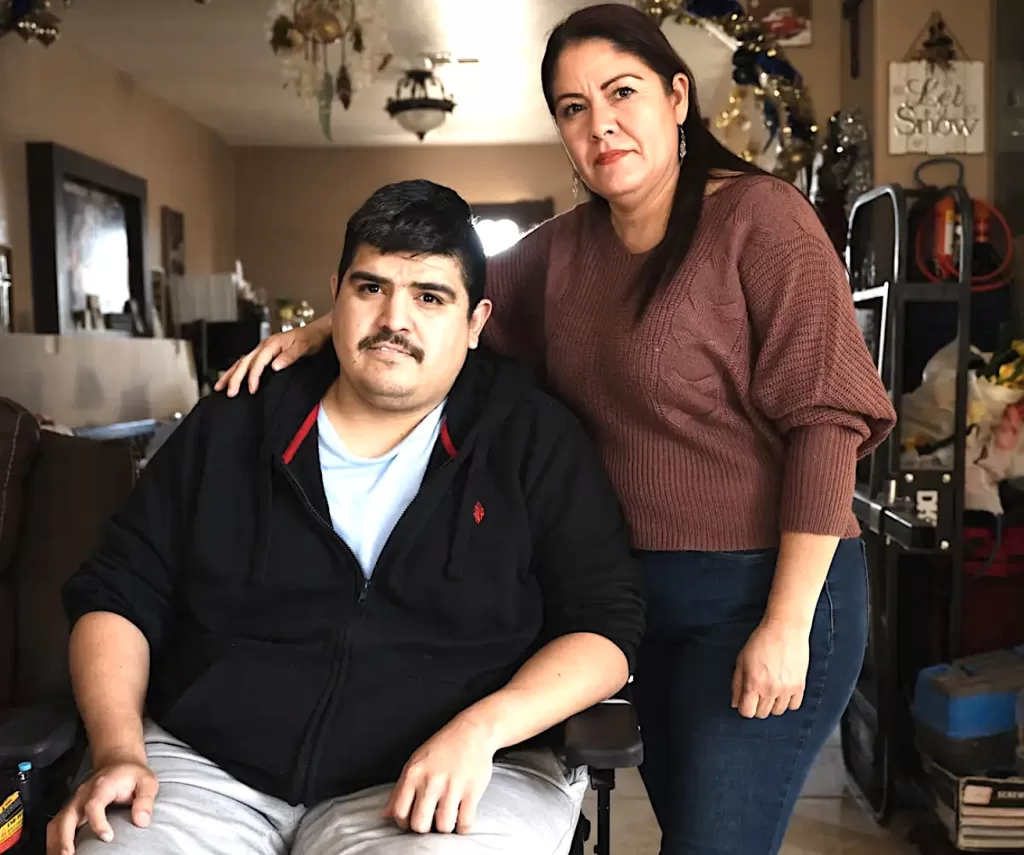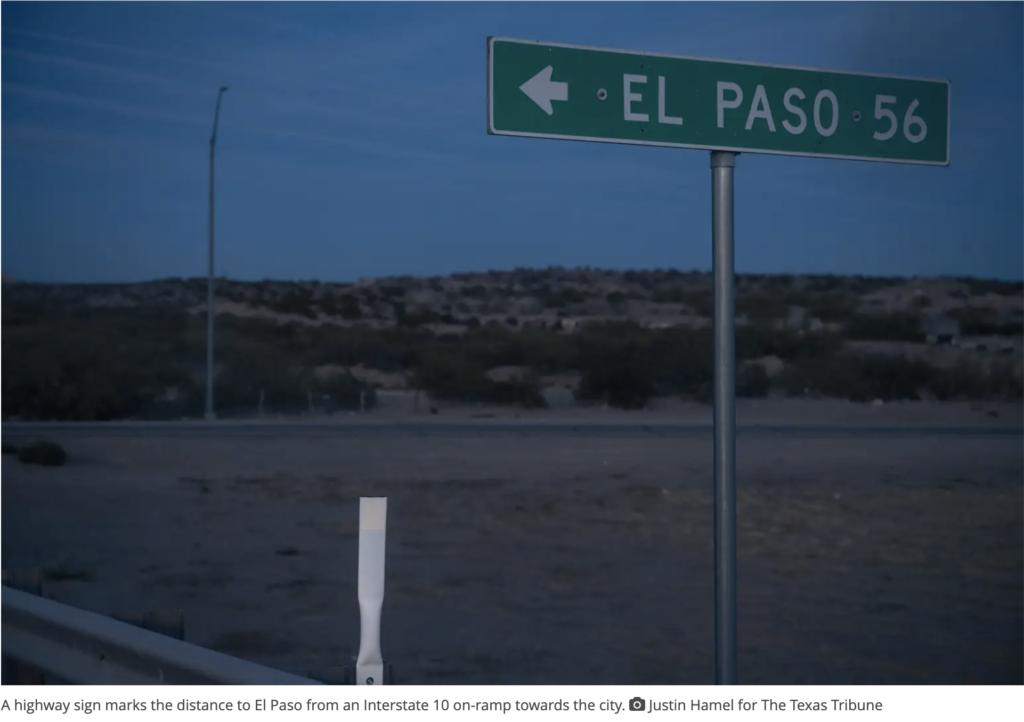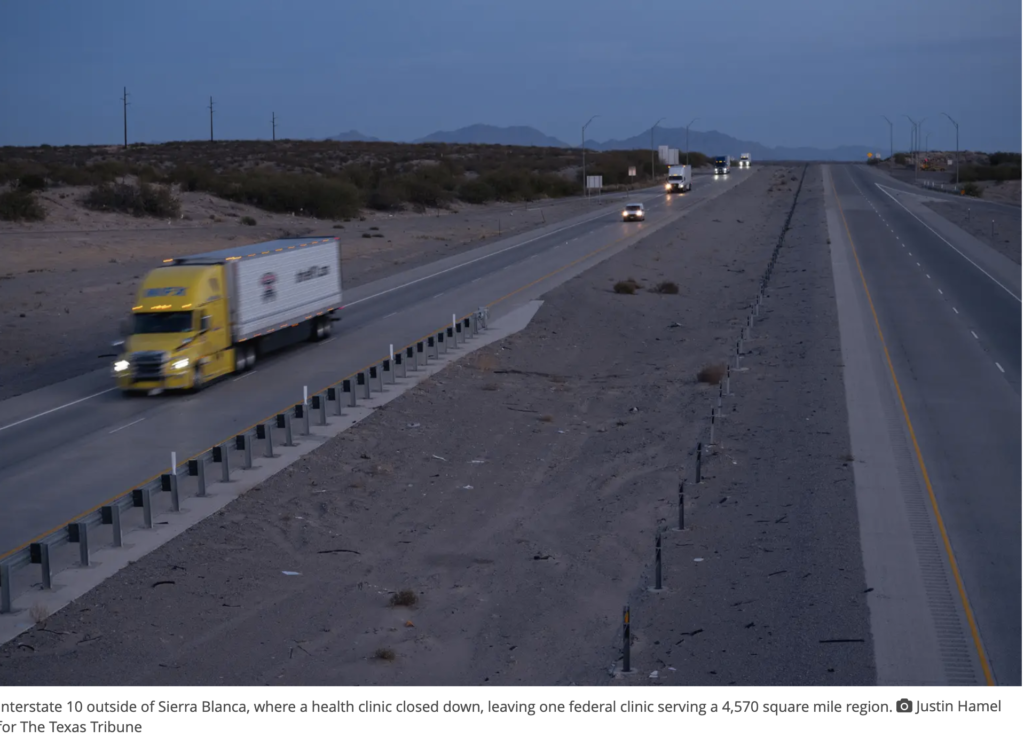
Editor’s Note by People’s Tribune Texas Correspondent, Karel Riley: This situation is tragic. Poor, near the border, no health insurance, no ready access to medical care. I have become increasingly aware of how rural communities suffer from a wide range of problems, even including lack of internet access, that are not being addressed by either political party. A positive aspect of this article is how these particular Texas communities band together to assist one another.
_____
Juvencia Padilla knows the drive to El Paso like the back of her hand. She takes frequent road trips to the West Texas city from her Fort Hancock home, seeing more cotton and alfalfa fields than towns on the way.
The trips are a medical necessity for her 29 year-old son Florentino Hernandez Jr.
“Sometimes it takes us all day over there,” Padilla said.
Not long before starting his first job, Hernandez was in a car accident. He was left paralyzed from the waist down. His mother has been his 24/7 caregiver ever since, a role that included learning how to administer medical care at home and managing regular visits to physical therapists, doctors and hospitals.
If he isn’t napping through the drive, Hernandez will turn on Mexican corridos as he and Padilla stare into the all too familiar landscape — letting the stories of history and struggle make the hour- and-a-half long drive go by faster.
Hernandez’s condition is challenging to manage on its own but living in a small town like Fort Hancock makes it even tougher.
The town of 1,200 people is in rural Hudspeth County, one of 29 border counties considered to be medically underserved areas according to the U.S. Health Resources and Services Administration. This designation means residents lack access to primary care services, sites or providers to meet their medical needs.
Residents in medically underserved areas tend to be more vulnerable. They are also more likely to be older than 65 and live below the federal poverty line. A new report also found disparities in COVID-19 admissions between border and non-border hospitals, signaling broader health issues among people who live along the border.
After a health clinic in Sierra Blanca — Hudspeth’s county seat — closed down, there’s now one federal clinic serving the 4,570 square mile region, said Joanna Mackenzie, Hudspeth’s county judge and former emergency management coordinator.
“We don’t have a grocery store in our county, nonetheless a hospital,” Mackenzie said.
After a surgery to treat a hip infection, Hernandez had two choices. He could do post-surgery treatment in a nursing home or at a relative’s house closer to the city. Without any nurses in Fort Hancock, he had to move near nurses in El Paso for treatment.
“Nobody was willing to come all the way over here,” Padilla said.
For those four weeks, Padilla had to take some time off work and travel between her home and her relative’s home to take care of her kids.
“I had my other kids at school,” Padilla said. “I was coming back and forth.”
The only option for most county residents to receive medical care is to travel across county lines to El Paso, including in moments of emergency.
Mackenzie said she’s seen firsthand how residents have to choose between their health and their day-to-day needs. Moving closer to medical facilities isn’t an option for many residents who can’t afford to live in more expensive places like El Paso.
When Luz Rodriguez, another Hudspeth County resident, found her husband Mike unable to breathe seven years ago, the 911 operator told her an ambulance would arrive in an hour and a half to transport him to an El Paso hospital.
Hudspeth County currently has four ambulances that service the area, but at the time, the county had only one ambulance and it was already on another call.
“This person told me ‘you’re gonna have to wait,’” Rodriguez said. “I’m seeing him purple. He can’t breathe.”
His chest started to rise and fall again before the ambulance arrived, but Rodriguez said she felt prepared for him to die before help came.
Mike struggled with multiple myeloma and chronic obstructive pulmonary disease at the time. Because of his condition, Rodriguez said the incident was one of several times they had to wait an extended period of time for an ambulance to arrive.
Rodriguez’s husband died in 2018, but now she tries to be there for her neighbors through their medical emergencies. “(Barriers to medical access) affect all of us,” she said.
“When people need help here, everybody bands together and it is a beautiful thing,” Mackenzie said. “But we need to be more preventative. We need to be more prepared.”
Mackenzie said she wishes the state would do more to assist smaller counties like her own.
Even in border counties with more resources and more people, limited access to medical care inevitably affects the health of impacted residents, said Fatma Dihowm, an internal medicine doctor who used to work in El Paso. She’s now practicing in New Mexico.
Dihowm was the primary investigator for a recent study examining health disparities between border and non-border counties from 2020 to 2021 — the first two years of the COVID-19 pandemic.
The study found that COVID-19 infected patients at border hospitals had higher admission rates to critical care and intensive care units as well as higher mortality rates.
But Dihowm says these outcomes are related to the population’s existing underlying conditions before the pandemic.
According to CDC health data, the average share of border county adults with diagnosed diabetes was 16% compared to 11.1% of all Texans in 2021. Obesity was prevalent among 42% of border adults on average, which is about 5.8% higher than the state average.
“(The data) is telling you that patients are very sick; they have baseline problems,“ Dihowm said. “We have a problem here.”
Hidalgo County, which has a much bigger population than Hudspeth County with over 888,000 residents, has more medical providers but its area is still classified as medically underserved. There were eight hospitals and 550 registered physicians in the region in 2021.
Eddie Olivarez, chief administrative officer for Hidalgo County’s health and human services department, said the South Texas border county has struggled in the past to provide enough medical resources to its uninsured and underinsured populations. In 2022, 28.6% of county residents were uninsured.
“There was a very limited amount of areas that would deal with low cost or no-cost health care,” Olivarez said.
The creation of The University of Texas Rio Grande Valley and its assistance to the community has marked a turning point for local health in the past decade, Olivarez said. The Texas Legislature approved the state school in 2013 after the consolidation of UT at Brownsville/Texas Southmost College and UT-Pan American.
The university’s Area Health Education Center Scholars program brings students enrolled in health-related majors to service sites in Hidalgo, Starr and Cameron counties.
John Ronnau, senior associate dean for the UT-RGV medical school’s community health partnerships said for the past seven years the AHEC program has provided care to underserved populations in South Texas, including health screenings, immunizations and preventive care.
“(Our patients) would not otherwise have access to primary medical care,” Ronnau said.
Ronnau said getting medical services means sacrifice for most adults in border counties, whether that’s taking unpaid time off work or appointments times conflicting with dropping off and picking up their kids at school.
“A lot of these folks have so many other needs on their list that taking care of themselves is not at the top by any means,” Ronnau said. “They just don’t have the luxury of having those resources to think to take care of themselves until a problem is severe.”
Even though she has a history with high cholesterol and stomach problems, Padilla hasn’t seen a doctor in at least five or six years because, on top of her caregiving responsibilities at home, she doesn’t have health insurance.
Without access to services like blood work or regular medical examinations, Padilla said she has no way of knowing if she’s healthy. When issues arise, she said she relies on at-home remedies like herbal tea and baths to manage her health.
“I have to take care of my house,” Padilla said. “I have to take care of my kids.”
While the areas of need are clear, the pathway to improving medical access and outcomes along the border requires multiple solutions.
Dihowm said she believes focusing on telemedicine is the easiest way to get immediate and expansive access to border patients.
Within Hidalgo County, Olivarez said public transportation is currently the most important piece of the puzzle in getting medical access to his county’s residents.
“The majority of hospitals, doctors’ offices, cancer treatment, all those facilities are within the McAllen, Edinburg area,” Olivarez said. “Having a broader range of transportation going out to the (county’s) outlying areas … will be helpful for our health care.”
Ronnau said they hope to expand the AHEC program’s service sites into Willacy County and continue to reach more people near their existing sites.
“The health care challenges, especially for folks who don’t have a lot of income along the border, requires a community response —multiple partners— and that’s what (AHEC) has been about,” Ronnau said.
Even though the expansive areas for improvement in border health require expansive work, Ronnau said border communities’ abilities to band together in moments of need will fuel solutions.
A prime example, he says, is how counties participating in the AHEC program provide and maintain site facilities at no cost, which he said is a huge contribution to the program.
“My takeaway from being in the Valley all these years is the value and importance of working together across boundaries, across organizations, across departments, across communities,” Ronnau said. “I think we’re pretty good at that.”


Disclosure: The University of Texas Rio Grande Valley has been a financial supporter of The Texas Tribune, a nonprofit, nonpartisan news organization that is funded in part by donations from members, foundations and corporate sponsors. Financial supporters play no role in the Tribune’s journalism. Find a complete list of them here.
This article originally appeared in The Texas Tribune at https://www.texastribune.org/2023/12/14/health-care-border-counties/.
The Texas Tribune is a member-supported, nonpartisan newsroom informing and engaging Texans on state politics and policy. Learn more at texastribune.org.
